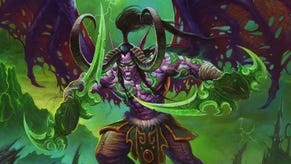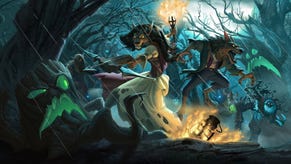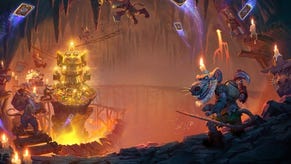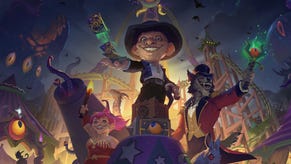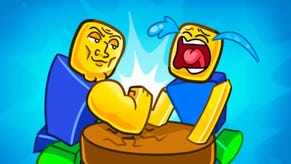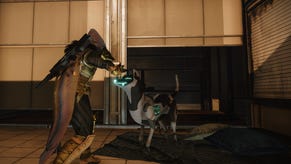Hearthstone - best free Mage deck, basic deck, Mage cards
Don't miss our guide to getting around the Mage's secrets, avoiding the class's most powerful removal spells and playing a powerful free deck.
As you can probably guess, the Mage is Hearthstone's master of the arcane arts. Like the Priest, the Mage used to be one of the most powerful classes in the game, but underwent a round of balancing that pushed it some way down the rankings. Few would place it in the top tier when creating competitive decks these days, but if you enjoy dictating the pace of a match it can still be one of the most enjoyable classes to play. Let's not forget either that the popular streamer Trump took the class all the way to Legendary rank using only free starting cards, combined with whatever he could afford to craft for free along the way.
The Mage is extremely effective at dealing with the popular rush approach to play, where players flood a steady stream of low health minions on the board. The class's Fireblast Hero Power may only deal a single point of damage for the cost of two mana, but it's great for stalling an opponent's early game - that extra point of damage can often make the difference between finishing off an enemy minion on the board, or taking an awful lot of damage to the face next turn.
Popular Mage cards
Polymorph

Polymorph will ruin your day all day long if you let it, and it's the quickest way to lose that awesome Legendary card you just knew was about to win you the game. No minion is immune to its transformative effect, and this powerful spell reduces even the toughest minions to a mere sheep with one health and one attacking point. A rather useless creature, in other words, unless you somehow have the capacity to buff it back up to potency. Even then, you'll most likely want to save that buff for something far worthier.
If you're the one wielding this card, think very carefully before you spend the Polymorph in your hand during the early to mid game. Think a turn or two ahead, and instead consider developing your minions to deal with your opponent's fighting force. When you do make use of it, don't completely write off that feeble sheep. Your opponent will do everything possible to use their new furry friend to get at least one efficient minion trade from it before it dies.
Flamestrike

This expensive but brutal spell is a staple of every Mage's arsenal, and its potential to change the fate of a match cannot be underestimated. You should always assume a Mage has a Flamestrike not just in their deck, but in their hand right now, and if you have it you can often clear the other side of the board, even quite late into the game, thanks to its capacity to dish out four points of damage to every single enemy minion on the board. Throw in the buffing effect of a card that increases spell power and you can hit enemies for even more.
If you're playing against a Mage, simply assume that you will lose everything on the next turn once turn seven has been reached, and field your minions accordingly. Always assume a Mage has it in their deck. To avoid a complete wipeout, it's often a great idea to put down a minion that will survive Flamestrike before the Mage's next turn. That way you'll at least have something to work with after the apocalypse.
Fireball

Fireball's not just a great finisher for when you reach the late-game, it's just as useful for killing some seriously meaty minions. Resist the urge to spend these spells just because they're the only option you have on a particular turn. You'll win more matches in the long run by using these spells to control the board, instead of gleefully melting your opponent's face just because you can.
If you're on the other side of the Fireball, the good news is that you can at least assume your opponent is going to make use of these cards at some point. Don't gift the Mage any hefty minions that you can't replace on the next turn, and never assume that the game's over until your opponent explodes. Unless you're playing in Arena, the Mage can only pack two Fireballs in a deck, so keep track of them as they're spent.
Water Elemental
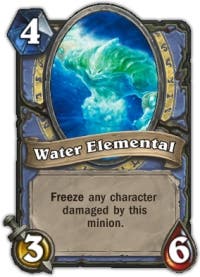
The Water Elemental may not pack a huge amount of firepower, but that's not really why it's such a useful card to have in your Mage deck. The ability to freeze any opponent it touches is great for stalling big mid-game minions while you develop your own side of the board. If you opt to freeze a weapon-wielding Hero instead, they'll be incapable of dishing out their damage as long as you can maintain the effect each turn. Just be aware that if you use it against a Warrior with three or more armour on, the Elemental will deliver its damage, but the freezing effect won't take hold.
If using a weapon is an absolutely critical part of your deck strategy, it goes without saying that you need to prioritise taking down the Water Elemental at any cost. You can very often throw the efficient minion-trading rules out of the window when it comes to dealing with this minion, as it has the potential to alter the tempo of a game drastically.
Mage Secrets guide
Unlike the Hunter's Secrets, which cause huge disruption to an opponent's strategy, the Mage's Secrets are typically concentrated on self-preservation. With that said, there's a sensible process of elimination that you should follow if you want to minimise the impact of these hidden effects. Here's how each Secret works, and how you should play around all of the possibilities.
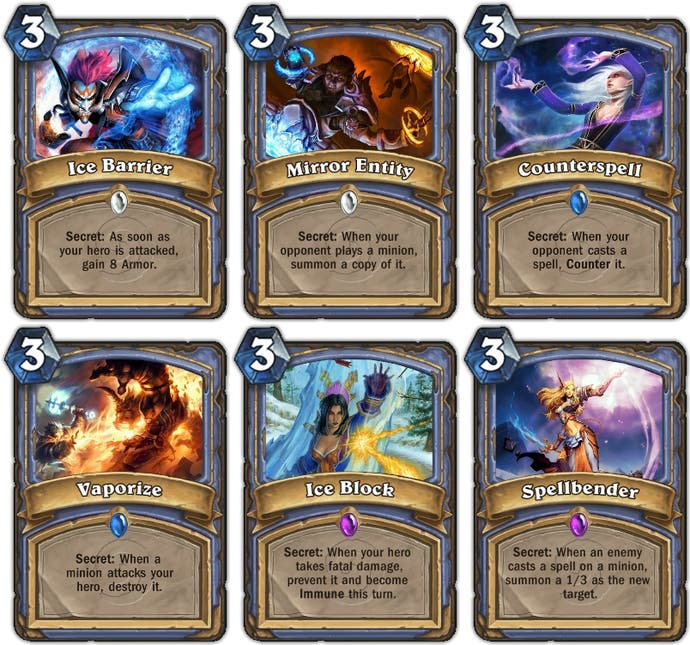
| Secret | Effect when triggered |
|---|---|
| Counterspell | When your opponent casts a spell, counter it. |
| Ice Barrier | As soon as your Hero is attacked, gain 8 Armor. |
| Ice Block | When your Hero takes fatal damage, prevent it and become Immune this turn. |
| Mirror Entity | When your opponent plays a minion, summon a copy of it. |
| Spellbender | When an enemy casts a spell on a minion, summon a 1/3 as the new target. |
| Vaporize | When a minion attacks your Hero, destroy it. |
- If you have a weak minion on the board, fire it off into the Mage's face. That will expose either Ice Barrier or Vaporize, and if it's Vaporize then you won't have sacrificed a strong minion for nothing.
- If you don't have a weak minion on the board, play one. If it triggers Mirror Entity, your opponent will get very low value from their Secret.
- If you've still not triggered the Mage's Secret, avoid casting a spell to buff your minion up. This will simply give the Mage a more powerful minion if the Secret in play is Spellbender.
- Instead, fire the weakest spell you have at an enemy minion, assuming the Mage has one out. This will either trigger Spellbender and redirect the damage, or trigger Counterspell which nullifies the spell you just tried to fire off.
- If you still haven't triggered the Mage's Secret, it means your killing blow against the Hero won't land, and they'll instead get a free turn to try and win the match or nullify your board threat. Like we said, never assume a match against a Mage is over until it's over!
The best basic Mage deck
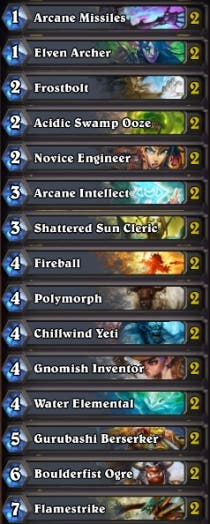
The key to succeeding with this deck is to keep your opponent's side of the board clear for as long as possible, so you can start making use of your meatier minions later on. Your spells are great for slowing down the other Hero's board development, but try to avoid spending your Polymorphs recklessly in the early game - you'll almost certainly need them to stay ahead of the game as you start laying down your own fighting force later on. Don't forget that you can enrage your Gurubashi Berserkers using the Mage's Hero Power too.
Your early minions won't do a great deal of damage, but you should be able to handle many early threats by combining their individual attacks with your hero power. A lot of the weaker minions in this deck keep your card draw flowing too, increasing the chance you'll have the tools you need to handle the match as the board develops. When you reach the latter stages of a game, those Flamestrikes can prove critical. Just be aware that smart players try to play around this powerful area-of-effect spell by holding back around turn six.
Like most of the free decks in this guide, you'll likely need to Mulligan your starting hand quite aggressively. You need to start the match with as many low-cost minions and spells as possible, so don't be tempted to hang onto that Boulderfist Ogre if you draw it - you need to actually make it to turn six first!
Looking for more of the best free Hearthstone decks? Head back to the first page of this article.
To stay on top of all the latest Hearthstone developments, take a look through our dedicated Hearthstone site MetaBomb.



